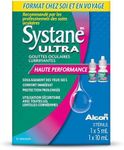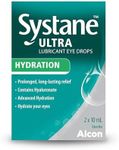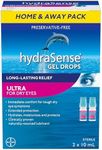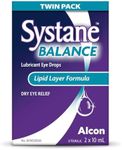Buying Guide for the Best Dry Eye Drops
Choosing the right dry eye drops can make a big difference in your comfort and eye health. With so many options available, it's important to understand what features matter most and how they relate to your specific needs. The best approach is to consider the cause and severity of your dry eyes, any sensitivities you may have, and how often you plan to use the drops. By understanding the key specifications, you can select a product that provides effective relief and fits seamlessly into your daily routine.Type of Eye DropThe type of eye drop refers to its main purpose and formulation, such as artificial tears, lubricating drops, or prescription drops. This is important because different types address different causes and severities of dry eye. Artificial tears are the most common and are suitable for mild, occasional dryness, while lubricating gels or ointments are thicker and provide longer-lasting relief for more severe cases. Prescription drops are used for chronic or medically diagnosed dry eye conditions. To choose the right type, consider how often your eyes feel dry and whether you need quick, light relief or something more intensive and long-lasting.
Preservative vs. Preservative-FreeEye drops can contain preservatives to prevent contamination, or they can be preservative-free. This matters because preservatives can sometimes irritate sensitive eyes, especially with frequent use. Preserved drops are generally fine for occasional use, while preservative-free options are better for people who use drops multiple times a day or have sensitive eyes. If you have allergies, sensitive eyes, or use drops often, preservative-free is usually the safer choice.
Viscosity (Thickness)Viscosity refers to how thick or thin the eye drop is. Thinner drops feel more like natural tears and are comfortable for daytime use, but may not last as long. Thicker drops, gels, or ointments provide longer-lasting relief but can blur your vision temporarily, making them better for nighttime use. If you need quick, clear relief during the day, go for a thinner drop. If your eyes are very dry, especially overnight, a thicker formula may be more effective.
Bottle Design and PackagingThe design of the bottle and packaging affects how easy and hygienic the drops are to use. Single-use vials are usually preservative-free and reduce the risk of contamination, making them ideal for sensitive eyes or frequent use. Multi-dose bottles are more convenient and cost-effective for occasional use. If you travel often or need to carry drops with you, look for compact, easy-to-open packaging.
Additional IngredientsSome eye drops include extra ingredients like electrolytes, oils, or medications to address specific causes of dry eye, such as inflammation or tear evaporation. These can be important if your dry eye is due to a particular condition or if you need more than basic lubrication. If you have been diagnosed with a specific type of dry eye or have other eye health concerns, look for drops with ingredients tailored to your needs, but always check with a healthcare professional if you are unsure.















